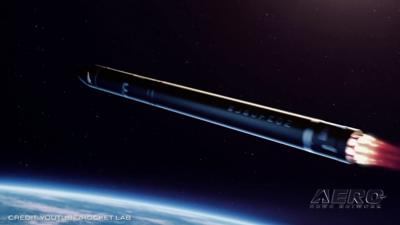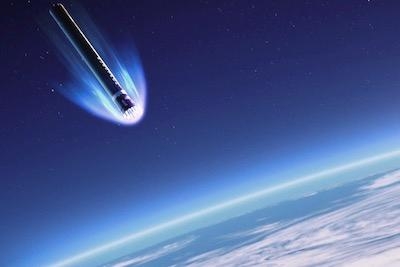Sun, Nov 21, 2021
Helicopter Recovery Testing Operations Begin
Rocket Lab has begun its new phase of testing in their efforts to more reliably and affordably recover first stage rockets. The ultimate goal of rotary-wing aerial recovery draws closer as the company begins using helicopters to observe and track their Electron rocket's first stage as it descends back to earth. If successful, the Electron could be the world's first reusable, orbital-class commercial small rocket.

The most recent Love At First Insight mission was arranged for BlackSky through space services provider Spaceflight Inc, and made for Electron's 22nd launch from Rocket Lab's complex 1 in New Zealand. The successful launch enabled the delivery of 2 BlackSky Gen-2 Earth-Imaging satellites into a circular orbit at an altitude of almost 270 miles. The addition grows BlackSky's constellation of real-time geospatial monitoring spacecraft and marks the 107th satellite placed by Rocket Lab.
The recent mission also included a controlled ocean splashdown with recovery of the first stage of the Electron. A Rocket Lab helo remained stationed in the recovery zone 200 nm offshore as it awaited the stage's return, observing and tracking the rocket while testing communications and procedures for an eventual operation that will see the rocket recovered in mid-air, before it ever touches down on sea or land. The move would help return the equipment to service far faster than a seaborne recovery system, with its requisite cleaning and re-checking in the future, a tremendous boon to a nascent industry worried about its sustainability image.

Mission, named Love at First Insight, was the 22nd for the company. One of numerous BlackSky missions in a multi-launch agreement, the completion accounts for 5 satellites added to their constellation, with 2 more scheduled on the mission 23, A Data With Destiny, sometime in December of 2021 if conditions permit.
Peter Beck, Rocket Lab founder and CEO, says: “Today’s launch was a masterclass from an incredible team of engineers on how to successfully deliver customers’ satellites to space while at the same time demonstrating cutting-edge operations and innovation that pushes the space industry forward on small rocket reusability. This is our third successful proof of concept recovery mission, and further cements Electron as the leading launch vehicle for the small satellite market. We are all excited to move onto the next phase of reusability next year; catching Electron in the air with a helicopter.”
More News
A Puff Of Smoke Came Out From The Top Of The Engine Cowling Followed By A Total Loss Of Engine Power On May 9, 2025, about 1020 mountain daylight time, an experimental amateur-buil>[...]
From 2022 (YouTube Edition): Jenny, I’ve Got Your Number... Among the magnificent antique aircraft on display at EAA’s AirVenture 2022 was a 1918 Curtiss Jenny painstak>[...]
Very High Frequency (VHF) The frequency band between 30 and 300 MHz. Portions of this band, 108 to 118 MHz, are used for certain NAVAIDs; 118 to 136 MHz are used for civil air/grou>[...]
“From approximately November 2021 through January 2022, Britton-Harr, acting on behalf of AeroVanti, entered into lease-purchase agreements for five Piaggio-manufactured airc>[...]
From 2008 (YouTube Edition): US Fish and Wildlife Service Chooses The Kodiak To Monitor Waterfowl Populations Waterfowl all over North America may soon have to get used to a new ab>[...]
 NTSB Prelim: Lee Aviation LLC JA30 SuperStol
NTSB Prelim: Lee Aviation LLC JA30 SuperStol Classic Aero-TV: Curtiss Jenny Build Wows AirVenture Crowds
Classic Aero-TV: Curtiss Jenny Build Wows AirVenture Crowds ANN's Daily Aero-Term (05.30.25): Very High Frequency (VHF)
ANN's Daily Aero-Term (05.30.25): Very High Frequency (VHF) Aero-News: Quote of the Day (05.30.25)
Aero-News: Quote of the Day (05.30.25) Classic Aero-TV: Quest Kodiak Enhances Migration Monitoring Programs
Classic Aero-TV: Quest Kodiak Enhances Migration Monitoring Programs




